Designing And Implementing Microsoft DevOps Solutions AZ400 Overview
Designing and Implementing Microsoft DevOps Solutions AZ400 Course Outline
MODULE 1: Introduction to DevOps
- Introduction
- What is DevOps?
- Explore the DevOps journey
- Identify transformation teams
- Explore shared goals and define timelines
- Knowledge check
- Summary
MODULE 2: Choose the right project
- Introduction
- Explore greenfield and brownfield projects
- Decide when to use greenfield and brownfield projects
- Decide when to use systems of record versus systems of engagement
- Identify groups to minimize initial resistance
- Identify project metrics and key performance indicators (KPIs)
- Knowledge check
- Summary
MODULE 3: Describe team structures
- Introduction
- Explore agile development practices
- Explore principles of agile development
- Define organization structure for agile practices
- Explore ideal DevOps team members
- Enable in-team and cross-team collaboration
- Select tools and processes for agile practices
- Knowledge check
- Summary
MODULE 4: Choose the DevOps tools
- Introduction
- What is Azure DevOps?
- What is GitHub?
- Explore an authorization and access strategy
- Migrate or integrate existing work management tools
- Migrate or integrate existing test management tools
- Design a license management strategy
- Knowledge check
- Summary
MODULE 5: Plan Agile with GitHub Projects and Azure Boards
- Introduction
- Introduction to GitHub Projects and Project boards
- Introduction to Azure Boards
- Link GitHub to Azure Boards
- Configure GitHub Projects
- Manage work with GitHub Project boards
- Customize Project views
- Collaborate using team discussions
- Agile Plan and Portfolio Management with Azure Boards
- Knowledge check
- Summary
MODULE 6: Introduction to source control
- Introduction
- Explore DevOps foundational practices
- What is source control?
- Explore benefits of source control
- Explore best practices for source control
- Knowledge check
- Summary
MODULE 7: Describe types of source control systems
- Introduction
- Understand centralized source control
- Understand distributed source control
- Explore Git and Team Foundation Version Control
- Examine and choose Git
- Understand objections to using Git
- Describe working with Git locally
- Knowledge check
- Summary
MODULE 8: Work with Azure Repos and GitHub
- Introduction
- Introduction to Azure Repos
- Introduction to GitHub
- Migrate from TFVC to Git
- Use GIT-TFS
- Develop online with GitHub Codespaces
- Knowledge check
- Summary
MODULE 9: Structure your Git Repo
- Introduction
- Explore monorepo versus multiple repos
- Implement a change log
- Knowledge check
- Summary
MODULE 10: Manage Git branches and workflows
- Introduction
- Explore branch workflow types
- Explore feature branch workflow
- Explore Git branch model for continuous delivery
- Explore GitHub flow
- Explore fork workflow
- Version Control with Git in Azure Repos
- Knowledge check
- Summary
MODULE 11: Collaborate with pull requests in Azure Repos
- Introduction
- Collaborate with pull requests
- Exercise - Azure Repos collaborating with pull requests
- Examine GitHub mobile for pull request approvals
- Knowledge check
- Summary
MODULE 12: Identify technical debt
- Introduction
- Examine code quality
- Examine complexity and quality metrics
- Introduction to technical debt
- Measure and manage technical debt
- Integrate other code quality tools
- Plan effective code reviews
- Knowledge check
- Summary
MODULE 13: Explore Git hooks
- Introduction
- Introduction to Git hooks
- Implement Git hooks
- Knowledge check
- Summary
MODULE 14: Plan foster inner source
- Introduction
- Explore foster inner source
- Implement the fork workflow
- Describe inner source with forks
- Knowledge check
- Summary
MODULE 15: Manage Git repositories
- Introduction
- Work with large repositories
- Purge repository data
- Manage releases with GitHub Repos
- Automate release notes with GitHub
- Knowledge check
- Summary
MODULE 16: Explore Azure Pipelines
- Introduction
- Explore the concept of pipelines in DevOps
- Describe Azure Pipelines
- Understand Azure Pipelines key terms
- Knowledge check
- Summary
MODULE 17: Manage Azure Pipeline agents and pools
- Introduction
- Choose between Microsoft-hosted versus self-hosted agents
- Explore job types
- Introduction to agent pools
- Explore predefined agent pool
- Understand typical situations for agent pools
- Communicate with Azure Pipelines
- Communicate to deploy to target servers
- Examine other considerations
- Describe security of agent pools
- Configure agent pools and understanding pipeline styles
- Knowledge check
- Summary
MODULE 18: Describe pipelines and concurrency
- Introduction
- Understand parallel jobs
- Estimate parallel jobs
- Describe Azure Pipelines and open-source projects
- Explore Azure Pipelines and Visual Designer
- Describe Azure Pipelines and YAML
- Knowledge check
- Summary
MODULE 19: Explore continuous integration
- Introduction
- Introduction to continuous integration
- Learn the four pillars of continuous integration
- Explore benefits of continuous integration
- Describe build properties
- Enable Continuous Integration with Azure Pipelines
- Knowledge check
- Summary
MODULE 20: Implement a pipeline strategy
- Introduction
- Configure agent demands
- Implement multi-agent builds
- Explore source control types supported by Azure Pipelines
- Knowledge check
- Summary
MODULE 21: Integrate with Azure Pipelines
- Introduction
- Describe the anatomy of a pipeline
- Understand the pipeline structure
- Detail templates
- Explore YAML resources
- Use multiple repositories in your pipeline
- Knowledge check
- Summary
MODULE 22: Introduction to GitHub Actions
- Introduction
- What are Actions?
- Explore Actions flow
- Understand workflows
- Describe standard workflow syntax elements
- Explore events
- Explore jobs
- Explore runners
- Examine release and test an action
- Knowledge check
- Summary
MODULE 23: Learn continuous integration with GitHub Actions
- Introduction
- Describe continuous integration with actions
- Examine environment variables
- Share artifacts between jobs
- Examine Workflow badges
- Describe best practices for creating actions
- Mark releases with Git tags
- Create encrypted secrets
- Use secrets in a workflow
- Implement GitHub Actions for CI/CD
- Knowledge check
- Summary
MODULE 24: Design a container build strategy
- Introduction
- Examine structure of containers
- Work with Docker containers
- Understand Dockerfile core concepts
- Examine multi-stage dockerfiles
- Examine considerations for multiple stage builds
- Explore Azure container-related services
- Deploy Docker containers to Azure App Service web apps
- Knowledge check
- Summary
MODULE 25: Introduction to continuous delivery
- Introduction
- Explore traditional IT development cycle
- What is continuous delivery?
- Move to continuous delivery
- Understand releases and deployments
- Understand release process versus release
- Knowledge check
- Summary
MODULE 26: Create a release pipeline
- Introduction
- Describe Azure DevOps release pipeline capabilities
- Explore release pipelines
- Explore artifact sources
- Choose the appropriate artifact source
- Exercise - select an artifact source
- Examine considerations for deployment to stages
- Exercise - set up stages
- Explore build and release tasks
- Explore custom build and release tasks
- Explore release jobs
- Configure Pipelines as Code with YAML
- Knowledge check
- Summary
MODULE 27: Explore release recommendations
- Introduction
- Understand the delivery cadence and three types of triggers
- Exercise - select your delivery and deployment cadence
- Explore release approvals
- Exercise - set up manual approvals
- Explore release gates
- Use release gates to protect quality
- Control Deployments using Release Gates
- Knowledge check
- Summary
MODULE 28: Provision and test environments
- Introduction
- Provision and configure target environments
- Exercise - set up service connections
- Configure automated integration and functional test automation
- Understand Shift-left
- Set up and run availability tests
- Explore Azure Load Testing
- Set up and run functional tests
- Knowledge check
- Summary
MODULE 29: Manage and modularize tasks and templates
- Introduction
- Examine task groups
- Exercise - create and manage task groups
- Explore variables in release pipelines
- Understand variable groups
- Exercise - create and manage variable groups
- Knowledge check
- Summary
MODULE 30: Automate inspection of health
- Introduction
- Automate inspection of health
- Explore events and notifications
- Explore service hooks
- Exercise - set up service hooks to monitor the pipeline
- Configure Azure DevOps notifications
- Configure GitHub notifications
- Explore how to measure quality of your release process
- Examine release notes and documentation
- Examine considerations for choosing release management tools
- Explore common release management tools
- Knowledge check
- Summary
MODULE 31: Introduction to deployment patterns
- Introduction
- Explore microservices architecture
- Examine classical deployment patterns
- Understand modern deployment patterns
- Knowledge check
- Summary
MODULE 32: Implement blue-green deployment and feature toggles
- Introduction
- What is blue-green deployment?
- Explore deployment slots
- Exercise - set up a blue-green deployment
- Introduction to feature toggles
- Describe feature toggle maintenance
- Knowledge check
- Summary
MODULE 33: Implement canary releases and dark launching
- Introduction
- Explore canary releases
- Examine Traffic Manager
- Understand dark launching
- Knowledge check
- Summary
MODULE 34: Implement A/B testing and progressive exposure deployment
- Introduction
- What is A/B testing?
- Explore CI-CD with deployment rings
- Exercise - Ring-based deployment
- Knowledge check
- Summary
MODULE 35: Integrate with identity management systems
- Introduction
- Integrate GitHub with single sign-on (SSO)
- Explore service principals
- Explore Managed Identity
- Knowledge check
- Summary
MODULE 36: Manage application configuration data
- Introduction
- Rethink application configuration data
- Explore separation of concerns
- Understand external configuration store patterns
- Introduction to Azure App Configuration
- Examine Key-value pairs
- Examine App configuration feature management
- Integrate Azure Key Vault with Azure Pipelines
- Manage secrets, tokens and certificates
- Examine DevOps inner and outer loop
- Integrate Azure Key Vault with Azure DevOps
- Enable Dynamic Configuration and Feature Flags
- Knowledge check
- Summary
MODULE 37: Explore infrastructure as code and configuration management
- Introduction
- Explore environment deployment
- Examine environment configuration
- Understand imperative versus declarative configuration
- Understand idempotent configuration
- Knowledge check
- Summary
MODULE 38: Create Azure resources using Azure Resource Manager templates
- Introduction
- Why use Azure Resource Manager templates?
- Explore template components
- Manage dependencies
- Modularize templates
- Manage secrets in templates
- Deployments using Azure Bicep templates
- Knowledge check
- Summary
MODULE 39: Create Azure resources by using Azure CLI
- Introduction
- What is Azure CLI?
- Work with Azure CLI
- Exercise - Run templates using Azure CLI
- Knowledge check
- Summary
MODULE 40: Explore Azure Automation with DevOps
- Introduction
- Create automation accounts
- What is a runbook?
- Understand automation shared resources
- Explore runbook gallery
- Examine webhooks
- Explore source control integration
- Explore PowerShell workflows
- Create a workflow
- Explore hybrid management
- Exercise - Create and run a workflow runbook
- Examine checkpoint and parallel processing
- Knowledge check
- Summary
MODULE 41: Implement Desired State Configuration (DSC)
- Introduction
- Understand configuration drift
- Explore Desired State Configuration (DSC)
- Explore Azure Automation State configuration (DSC)
- Examine DSC configuration file
- Exercise - Import and compile
- Exercise - Onboard machines for management
- Explore hybrid management
- Implement DSC and Linux Automation on Azure
- Knowledge check
- Summary
MODULE 42: Implement Bicep
- Introduction
- What is Bicep?
- Install Bicep
- Exercise - Create Bicep templates
- Understand Bicep file structure and syntax
- Exercise - Deploy a Bicep file from Azure Pipelines
- Exercise - Deploy a Bicep file from GitHub workflows
- Knowledge check
- Summary
MODULE 43: Introduction to Secure DevOps
- Introduction
- Describe SQL injection attack
- Understand DevSecOps
- Explore Secure DevOps Pipeline
- Explore key validation points
- Explore continuous security validation
- Understand threat modeling
- Exercise threat modeling
- Knowledge check
- Summary
MODULE 44: Implement open-source software
- Introduction
- Explore how software is built
- What is open-source software
- Explore corporate concerns with open-source software components
- Introduction to open-source licenses
- Explore common open-source licenses
- Examine license implications and ratings
- Knowledge check
- Summary
MODULE 45: Software Composition Analysis
- Introduction
- Inspect and validate code bases for compliance
- Explore software composition analysis (SCA)
- Integrate Mend with Azure Pipelines
- Implement GitHub Dependabot alerts and security updates
- Integrate software composition analysis checks into pipelines
- Examine tools for assess package security and license rate
- Interpret alerts from scanner tools
- Implement security and compliance in an Azure Pipeline
- Knowledge check
- Summary
MODULE 46: Static analyzers
- Introduction
- Explore SonarCloud
- Explore CodeQL in GitHub
- Manage technical debt with SonarCloud and Azure DevOps
- Knowledge check
- Summary
MODULE 47: OWASP and Dynamic Analyzers
- Introduction
- Plan Implement OWASP Secure Coding Practices
- Explore OWASP ZAP penetration test
- Explore OWASP ZAP results and bugs
- Knowledge check
- Summary
MODULE 48: Security Monitoring and Governance
- Introduction
- Implement pipeline security
- Explore Microsoft Defender for Cloud
- Examine Microsoft Defender for Cloud usage scenarios
- Explore Azure Policy
- Understand policies
- Explore initiatives
- Explore resource locks
- Explore Azure Blueprints
- Understand Microsoft Defender for Identity
- Knowledge check
- Summary
MODULE 49: Explore package dependencies
- Introduction
- What is dependency management?
- Describe elements of a dependency management strategy
- Identify dependencies
- Understand source and package componentization
- Decompose your system
- Scan your codebase for dependencies
- Knowledge check
- Summary
MODULE 50: Understand package management
- Introduction
- Explore packages
- Understand package feeds
- Explore package feed managers
- Explore common public package sources
- Explore self-hosted and SaaS based package sources
- Consume packages
- Introduction to Azure Artifacts
- Publish packages
- Package management with Azure Artifacts
- Knowledge check
- Summary
MODULE 51: Migrate consolidating and secure artifacts
- Introduction
- Identify existing artifact repositories
- Migrate and integrating artifact repositories
- Secure access to package feeds
- Examine roles
- Examine permissions
- Examine authentication
- Knowledge check
- Summary
MODULE 52: Implement a versioning strategy
- Introduction
- Understand versioning of artifacts
- Explore semantic versioning
- Examine release views
- Promote packages
- Exercise - Promote a package
- Explore best practices for versioning
- Exercise - Push from the pipeline
- Knowledge check
- Summary
MODULE 53: Introduction to GitHub Packages
- Introduction
- Publish packages
- Install a package
- Delete and restore a package
- Explore package access control and visibility
- Knowledge check
- Summary
MODULE 54: Implement tools to track usage and flow
- Introduction
- Understand the inner loop
- Introduction to continuous monitoring
- Explore Azure Monitor and Log Analytics
- Examine Kusto Query Language (KQL)
- Explore Application Insights
- Implement Application Insights
- Exercise - Add Application Insights to an ASP.NET core application
- Monitor application performance with Application Insights
- Knowledge check
- Summary
MODULE 55: Develop monitor and status dashboards
- Introduction
- Explore Azure Dashboards
- Examine view designer in Azure Monitor
- Explore Azure Monitor workbooks
- Explore Power BI
- Build your own custom application
- Knowledge check
- Summary
MODULE 56: Share knowledge within teams
- Introduction
- Share acquired knowledge within development teams
- Introduction to Azure DevOps project wikis
- Integrate with Azure Boards
- Share team knowledge using Azure Project Wiki
- Knowledge check
- Summary
MODULE 57: Design processes to automate application analytics
- Introduction
- Explore rapid responses and augmented search
- Integrate telemetry
- Examine monitoring tools and technologies
- Knowledge check
- Summary
MODULE 58: Manage alerts, blameless retrospectives and a just culture
- Introduction
- Examine when get a notification
- Explore how to fix it
- Explore smart detection notifications
- Improve performance
- Understand server response time degradation
- Reduce meaningless and non-actionable alerts
- Examine blameless retrospective
- Develop a just culture
- Knowledge check
- Summary


Who should attend this Designing and Implementing Microsoft DevOps Solutions AZ-400 Course?
This AZ-400 Designing and Implementing Microsoft DevOps Solutions is designed for introducing you to Azure DevOps solutions. This course for Microsoft Azure Training is of great help for the following:
- DevOps Engineers
- Software Developers
- Release Managers
- Application Administrators
- System Administrators
- Azure Administrators
- Cloud Architects
Prerequisites of the Designing and Implementing Microsoft DevOps Solutions AZ-400 Course
To attend this Designing and Implementing Microsoft DevOps Solutions AZ-400 Training, delegates should have their bases in Cloud Computing and hold past working exposure over building and managing Azure resources, along with understanding Azure CI/CD pipelines at a basic level.
Designing and Implementing Microsoft DevOps Solutions AZ-400 Course Overview
This Designing and Implementing Microsoft DevOps Solutions AZ-400 Training involves intensive knowledge about diving deep into the core personality in the integration of the DevOps solution on Azure. Covering across all the realms of CI/CD pipelines, Infrastructure as Code, Monitoring, and Governance. Real professionals need to understand and master DevOps in an environment in which technology is never constant.
Software Developers, IT Operators, and Systems Administrators need to learn Designing and Implementing Microsoft DevOps Solutions AZ400 because it will enable the respective professionals to optimise the development workflow, improve collaboration, and optimise the delivery of the software.
This 4-day Microsoft Azure Training by The Knowledge Academy will equip the delegates with the how-to, knowledge, and capability to design and implement DevOps solutions effectively in Microsoft Azure. Moreover, the delegates learn the best practices through hands-on labs and real-world situations that can be confidently taken up in practical scenarios.
Course Objectives
- To master Azure DevOps tools and services
- To teach delegates to implement CI/CD pipelines for Azure applications
- To manage Infrastructure as Code (IaC) with Azure Resource Manager templates
- To gain the skills to automate and optimise software deployment processes
- To enhance collaboration and communication within development teams
- To learn to implement effective monitoring and error tracking in Azure
- To ensure compliance and security in DevOps practices
After completing this Microsoft Azure Certification Course, individuals will gain deep knowledge and skills with which they could confidently be able to apply best practices in a real-world scenario of designing and implementing DevOps solutions on Microsoft Azure.


What’s included in this Designing and Implementing Microsoft DevOps Solutions AZ-400 Course?
- World-Class Training Sessions from Experienced Instructors
- Designing and Implementing Microsoft DevOps Solutions AZ-400 Certificate
- Digital Delegate Pack


Why choose us
Ways to take this course
Experience live, interactive learning from home with The Knowledge Academy's Online Instructor-led Designing And Implementing Microsoft DevOps Solutions AZ400. Engage directly with expert instructors, mirroring the classroom schedule for a comprehensive learning journey. Enjoy the convenience of virtual learning without compromising on the quality of interaction.
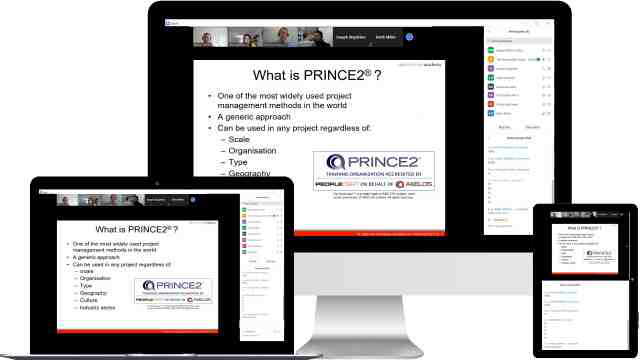
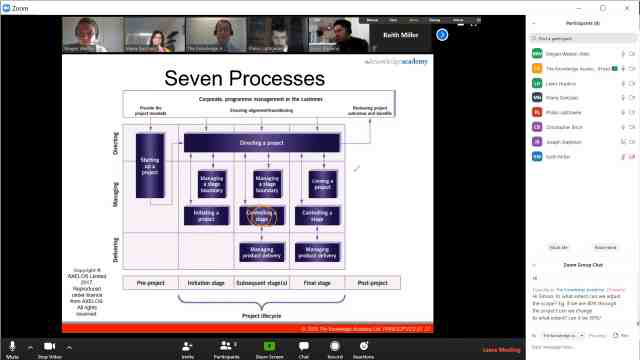
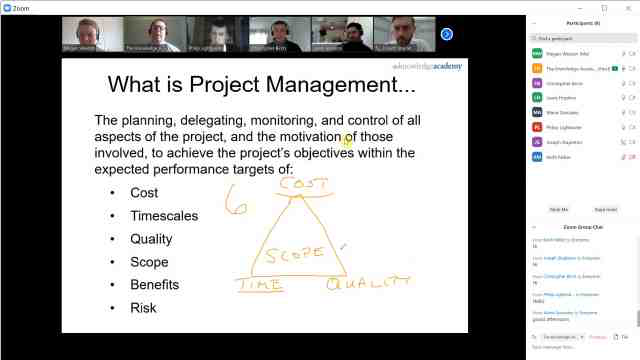
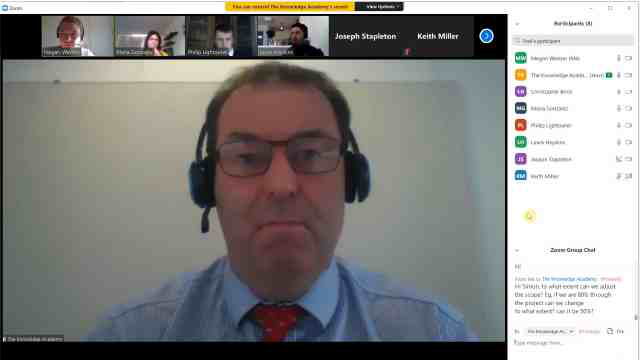
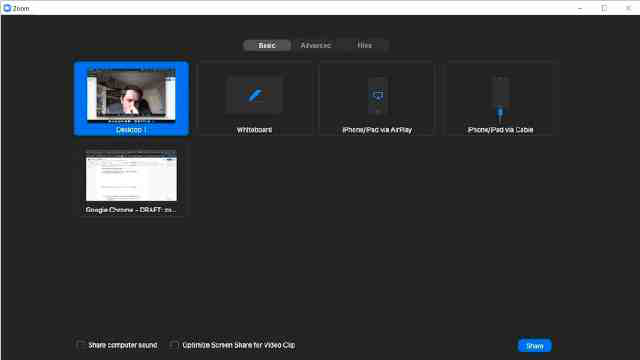
Unlock your potential with The Knowledge Academy's Designing And Implementing Microsoft DevOps Solutions AZ400, accessible anytime, anywhere on any device. Enjoy 90 days of online course access, extendable upon request, and benefit from the support of our expert trainers. Elevate your skills at your own pace with our Online Self-paced sessions.
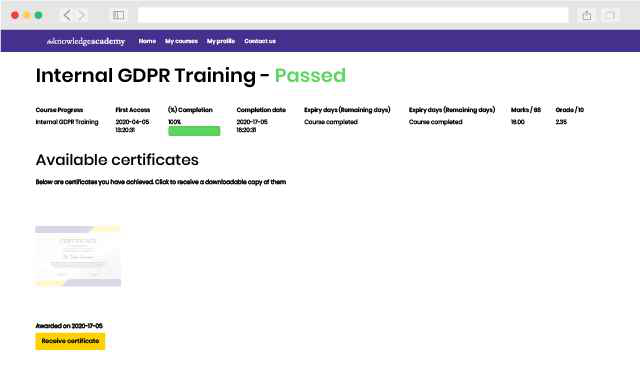
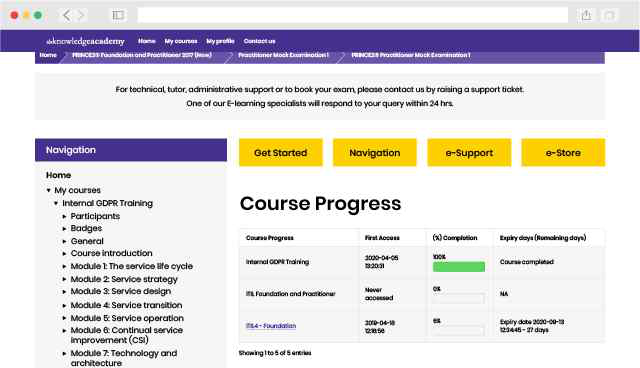
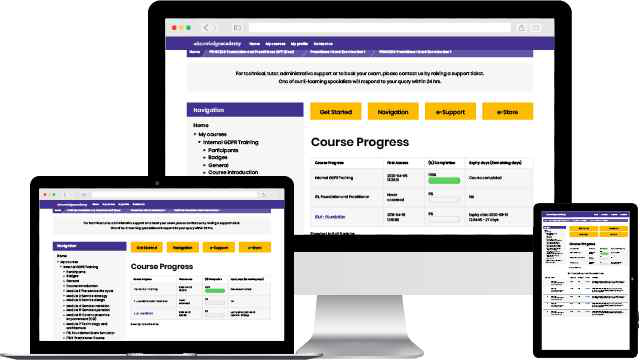
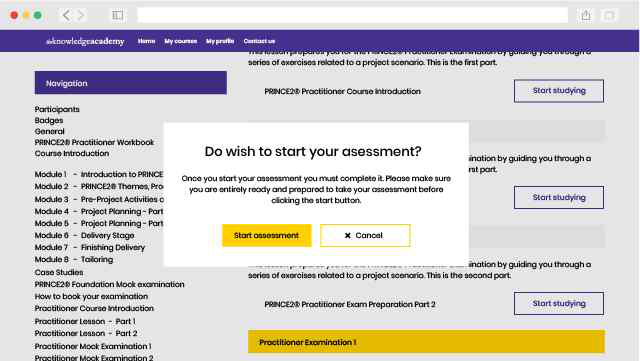
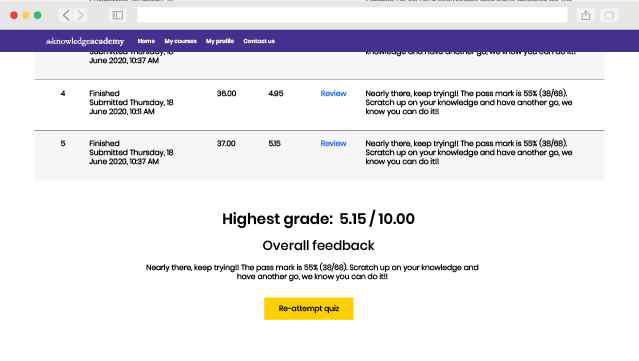
Experience the most sought-after learning style with The Knowledge Academy's Designing And Implementing Microsoft DevOps Solutions AZ400. Available in 490+ locations across 190+ countries, our hand-picked Classroom venues offer an invaluable human touch. Immerse yourself in a comprehensive, interactive experience with our expert-led Designing And Implementing Microsoft DevOps Solutions AZ400 sessions.

Highly experienced trainers
Boost your skills with our expert trainers, boasting 10+ years of real-world experience, ensuring an engaging and informative training experience

State of the art training venues
We only use the highest standard of learning facilities to make sure your experience is as comfortable and distraction-free as possible

Small class sizes
Our Classroom courses with limited class sizes foster discussions and provide a personalised, interactive learning environment

Great value for money
Achieve certification without breaking the bank. Find a lower price elsewhere? We'll match it to guarantee you the best value
Streamline large-scale training requirements with The Knowledge Academy’s In-house/Onsite Designing And Implementing Microsoft DevOps Solutions AZ400 at your business premises. Experience expert-led classroom learning from the comfort of your workplace and engage professional development.

Tailored learning experience
Leverage benefits offered from a certification that fits your unique business or project needs

Maximise your training budget
Cut unnecessary costs and focus your entire budget on what really matters, the training.

Team building opportunity
Our Designing And Implementing Microsoft DevOps Solutions AZ400 offers a unique chance for your team to bond and engage in discussions, enriching the learning experience beyond traditional classroom settings

Monitor employees progress
The course know-how will help you track and evaluate your employees' progression and performance with relative ease
What our customers are saying
Instructor Sararh P R is very knowledeable and patient. There is a lot to cover in the courses and yet he manages to get through it and lead us through the lab and troubleshoot issues as a trainer. This approach help us learn even through the challenges of the environment. That is the kind of skill we should have in real life scenarios. Two thumbs up!!!
Paul Edmond
The instructor had some very difficult students to deal with from day 1. The course had issues with some students who apparently had non-technical backgrounds and little if any Azure admin experience. Some also had the unreasonable expectation that the instructor could hand-hold them through basics, which the time restrictions on the course did not allow.
Conor Armstrong
Trainer was knowledgeable
Sunil Bhagat
Designing And Implementing Microsoft DevOps Solutions AZ400 FAQs

Why choose us
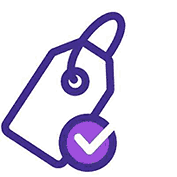
Best price in the industry
You won't find better value in the marketplace. If you do find a lower price, we will beat it.

Trusted & Approved
Microsoft Azure Training

Many delivery methods
Flexible delivery methods are available depending on your learning style.

High quality resources
Resources are included for a comprehensive learning experience.




"Really good course and well organised. Trainer was great with a sense of humour - his experience allowed a free flowing course, structured to help you gain as much information & relevant experience whilst helping prepare you for the exam"
Joshua Davies, Thames Water



Looking for more information on Microsoft Azure Certification?
 Back to course information
Back to course information
Microsoft DevOps Engineer Certification
Save upto 40%Included courses:
Microsoft Azure Fundamentals AZ-900 Certification$1795
Designing And Implementing Microsoft DevOps Solutions AZ400$3295
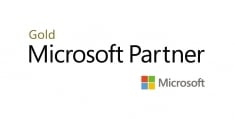

Total without package: $5090
Package price: $3095 (Save $1995)
Limited budget?
 If you miss out, enquire to get yourself on the waiting list for the next day!
If you miss out, enquire to get yourself on the waiting list for the next day!














 If you wish to make any changes to your course, please
If you wish to make any changes to your course, please

